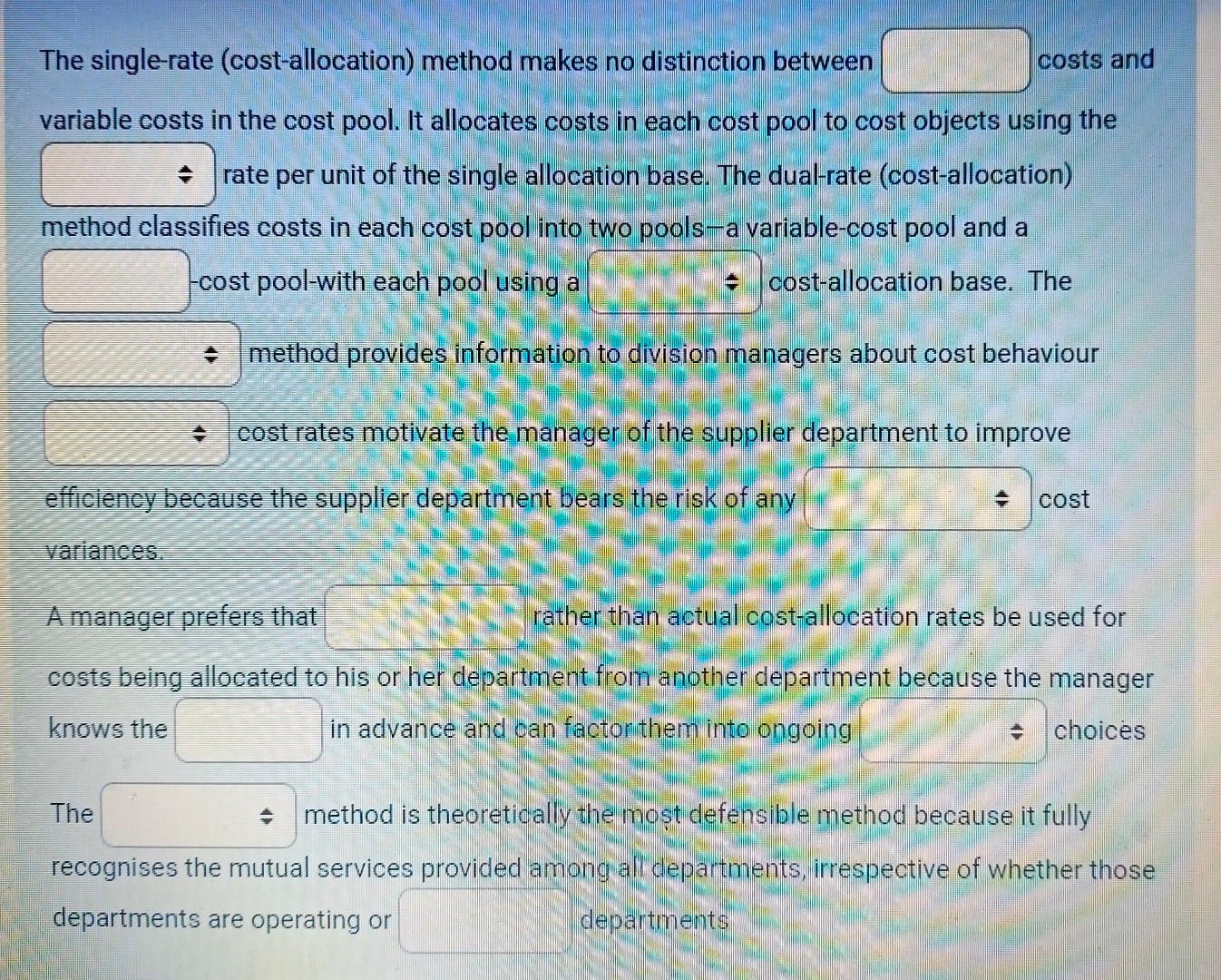Answered step by step
Verified Expert Solution
Question
1 Approved Answer
The single-rate (cost-allocation) method makes no distinction between costs and variable costs in the cost pool. It allocates costs in each cost pool to cost

The single-rate (cost-allocation) method makes no distinction between costs and variable costs in the cost pool. It allocates costs in each cost pool to cost objects using the rate per unit of the single allocation base. The dual-rate (cost-allocation) method classifies costs in each cost pool into two pools a variable-cost pool and a -cost pool-with each pool using a cost-allocation base. The method provides information to division managers about cost behaviour cost rates motivate the manager of the supplier department to improve efficlency because the supplier department bears the risk of any cost variances. A manager prefers that rather than actual cost-allocation rates be used for costs being allocated to his or her department from another department because the manager knows the in advance and can factor them into ongoing choices The method is theoretically the most defensible method because it fully recognises the mutual services provided among aff departments, irrespective of whether those departments are operating or departments
Step by Step Solution
There are 3 Steps involved in it
Step: 1

Get Instant Access to Expert-Tailored Solutions
See step-by-step solutions with expert insights and AI powered tools for academic success
Step: 2

Step: 3

Ace Your Homework with AI
Get the answers you need in no time with our AI-driven, step-by-step assistance
Get Started


